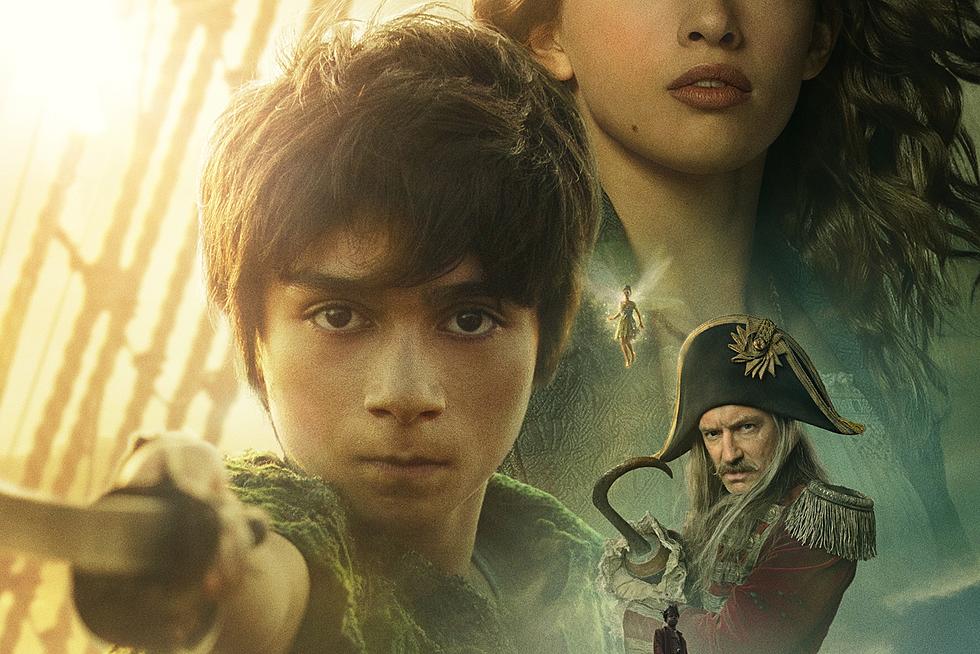
‘A Ghost Story’ Review: A Totally New Kind of Haunted House Movie
The stereotypical image of a ghost — a flowing white sheet with two black eyeholes — dates back to the days before most people were buried in caskets; instead, they were sent to the great beyond wrapped in a shroud. (Guess what color.) Because of that association, that image used to terrify people. Nowadays we associate it with lazy children who can’t think of another Halloween costume, and generally view it as a joke. (See also: 👻.) One of the most amazing things about David Lowery’s A Ghost Story — and there are a few amazing things about this audacious movie — is the way it reinvents that concept with renewed horror and even poignance. You will never look at that ghost emoji the same way again.
Although Rooney Mara and Casey Affleck are top-billed, that faceless, featureless sheet is the real star. Technically, he’s Affleck’s character (who’s listed in the closing credits as “C”) after he dies in a car wreck just a few feet from the ranch house he shares with his wife (Mara, credited as “M”). At the hospital, Mara identifies Affleck’s corpse while it lies on a gurney. Afterwards, she covers him with a sheet and leaves. For a long while, the camera just holds on the dead body ... and then it suddenly sits up, and begins its long journey home.
Although C and M had heard strange bumps in the night before, the real haunting begins when Affleck’s sheet-covered spirit returns home from the hospital. Wandering from room to room, he watches M grieve in her own unique way. (In a sequence that will surely go down in history as some of the greatest long takes ever, Mara rage-eats almost an entire vegan chocolate pie on camera.) Occasionally, the ghost will try to touch M, but she remains oblivious to his presence no matter how long he follows her around the home they shared.
For some audiences, the experience of watching these early stretches of A Ghost Story will feel like watching paint dry — which is a particularly appropriate metaphor in this case because in one scene Lowery actually films paint drying on a wall. But patient viewers will be rewarded, because all of the slow scenes and long takes are part of Lowery’s master plan to rewrite the rules that govern haunted house movies, and even the way we think about life, death, and time itself. The sometimes uncomfortably long scenes are key to that mission, because they make us acutely aware of time passing. When Lowery finally picks up the pace, it means even more as a result.
Lowery shot A Ghost Story in 4:3 aspect ratio, trapping Affleck’s ghost in gorgeously claustrophobic cinematography by Andrew Droz Palermo (rounded frame edges lend the film an additional timeless quality). All of the technical elements work together perfectly. Mara’s performance is incredibly moving, even though she barely has a handful of lines in the entire film. The visual effects, which are subtle at first and then grow in complexity, are seamlessly integrated into the frame. The music by Daniel Hart, some of which plays a crucial onscreen role, continually intensifies the melancholic mood. And the ghost itself is an incredible creation; deceptively simple in its design, it’s somehow totally blank and totally expressive at the same time. And its dialogue (it speaks, occasionally, in subtitles) is hilarious.
A Ghost Story is probably best experienced cold, so I’ll leave it to you to discover where Lowery and his title character go from the early scenes I’ve mentioned. It should be made clear, though, that A Ghost Story is not really a horror film, or at least not a traditional one. (Despite the premise and attractive stars, it’s also not Ghost; don’t expect to see a pottery wheel or hear “Unchained Melody.”) Still, this film disturbed me way more than most conventional horror movies, because Lowery understands that the really frightening part of any haunted house tale isn’t the ghost or the demon or the everyday objects moving of their own accord. It’s the reminder that death is coming for us all, whether we’re ready for it or not.
More From ScreenCrush









